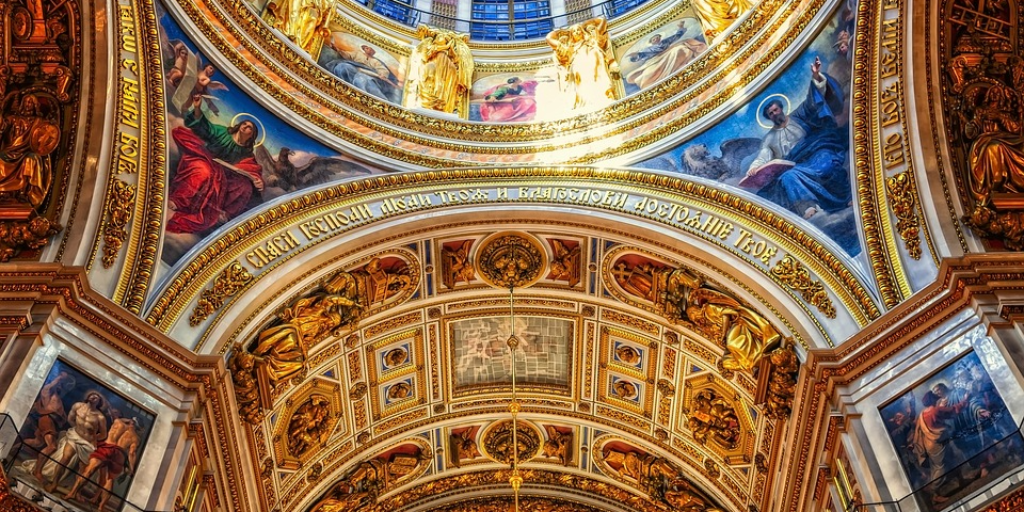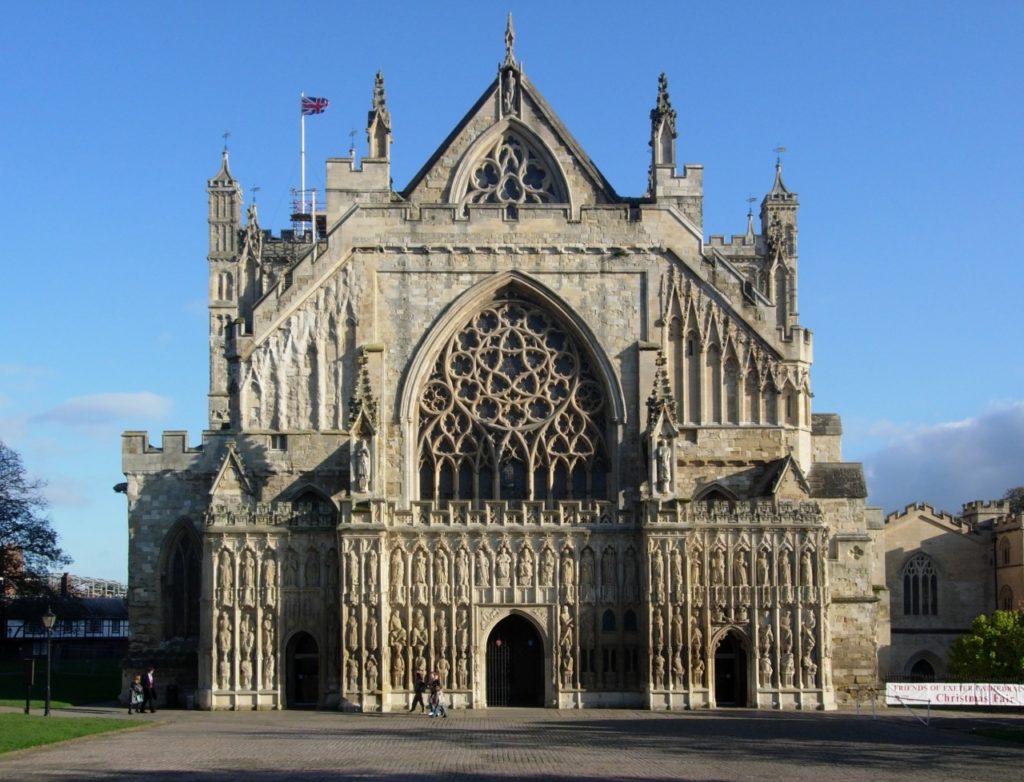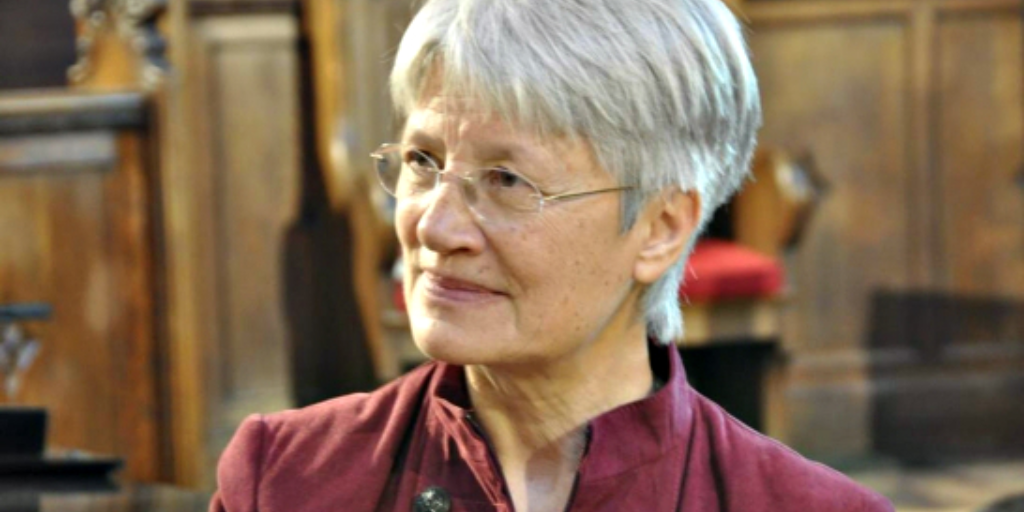
Imagining the Common Good
More than ever, people need to have opportunities to experience the profound sense of purpose and meaning that comes with unveiling the sacred nature of human life. Grace Davie shares her thoughts here on ‘vicarious religion’ and the potential of cathedrals to be places in which people can reach beyond themselves, connect with the sacred – and where our yearning for the Common Good can find expression.
The prompt for writing this was an article [1] in which Simon Jenkins muses on the notion of “vicarious religion” and the relative attractiveness of cathedrals as no-strings-attached places of meditation. Might this have relevance for the Common Good, in the sense that cathedrals are places in which to reach beyond ourselves and to connect with the sacred, both personally and collectively?
I have worked with the idea of “vicarious religion” for some twenty years, understanding this as the notion of religion performed by an active minority but on behalf of a much larger number, who (implicitly at least) not only understand, but appear to approve of what the minority is doing. The first half of the definition is straightforward and reflects the everyday meaning of the term “vicarious” – that is, to do something on behalf of someone else. The second half captures the legacy of the historic churches of Europe (including Britain) and is best explored by means of examples.
Religion can operate vicariously in a wide variety of ways. Churches and church leaders perform rituals on behalf of others (at the time of a birth or death for instance); if these services are denied, this causes offence – the more so amongst those who do not attend regularly. Church leaders and churchgoers also believe on behalf of others and incur criticism if they do not do this properly.
Once again it is the occasional churchgoer who articulates this disquiet most clearly. Thirdly, church leaders and churchgoers are expected to embody moral codes on behalf of others. The failure to do this adequately is one reason for the widespread disgust regarding the disclosures of child abuse among religious professionals.
Finally, and in line with their vocational responsibility, churches can offer space for the vicarious debate of unresolved moral and ethical issues in modern societies. If the latter were not the case, it is hard to understand the persistent scrutiny of their positions on a wide variety of issues, from changing views regarding the nature of sexuality to the difficult questions surrounding birth and death.
But if churches offer space for the vicarious debate of unresolved issues, might they also be a place in which our most profound, though not always coherent, aspirations can find expression? Might they, in other words, be somewhere to imagine our yearning for belonging and for participation in the Common Good? [2]

Precisely this idea was articulated in an extended chapter on religion, in the 3-volume report of the International Panel on Social Progress. [3] The question we set ourselves as the chapter team is easily stated: does religion contribute to or inhibit social progress, or human flourishing, as Together for the Common Good might say?
To answer this, we had to look case-by-case in different social and cultural domains, and in different parts of the world, to see what was happening on the ground. We were well aware that particular kinds of religion were perceived negatively, sometimes rightly so. Without doubt religion can take forms that are destructive of people and places. Elsewhere, however, religious individuals and religious communities are manifestly associated with the health and wellbeing of their respective societies – an entirely positive and often transformative feature.
Specifically, religious traditions in all their diversity can offer spaces in which better ways of living can be envisaged and understood – providing a foundation for an ethically rooted social progress. The vocabulary is different but the affinity with the Common Good is clear enough.
The potential moreover is huge, but so also are the pitfalls – not least the claim to any kind of exclusiveness. Churches and church goers, for example, are well-placed to make a significant contribution to the Common Good, but so are many other individuals, organisations and communities.
Hence a second conclusion of our chapter: that is to affirm the importance of well-judged partnerships as the most positive way forward, underlining that “well-judged” is the crucial word in this sentence. Such partnerships can be between different religions or denominations, but equally they can involve secular as well as religious initiatives.
Thus, we conclude that:
…researchers and policy-makers pursuing social progress will benefit from careful attention to the power of religious ideas to motivate, of religious practices to shape ways of life, of religious communities to mobilise and extend the reach of social changes, and of religious leaders and symbols to legitimate calls to action. The continuing need for critical but appreciative assessment and the demonstrable benefits of creative partnerships are our standout findings.
In short, churches and other religious communities are well-placed to build the Common Good. Witnessing to what it means to be human, and fostering partnerships with other local institutions, will bear fruit and strengthen community. The vicarious role, however, is equally significant in that it offers spaces in which our instinctive yearning for belonging can find expression.

But to return to Simon Jenkins’ original proposition: where do cathedrals fit in this analysis? My initial approach to “vicarious religions” concentrated on the parish churches of Europe, seeing these as a public utility available at the point of need for anyone living in a designated area. Cathedrals stand outside this model. In recent decades however (and especially in England) they have grown in popularity, offering a particular experience to those who frequent them – those who are drawn by traditional liturgy, high quality preaching, world class music and sublime architecture. Undoubtedly these unique buildings and the activities that take place within them lift the spirit.
To see cathedrals as competitors to the parish system isn’t helpful. These are complementary institutions. Both cathedral and parish church are able to carry the vicarious expression of a particular sense of belonging but in different ways. Some participants welcome the anonymity of the cathedral; others do not. Some enjoy listening to a professional choir; others want to join in. Both, however, can strive for excellence and within this to create a distinctive space for reflection about “what might be” as well as “what is”, indeed, for reflection about “who we are”.
Society would be the poorer without them, for which reason it is important to affirm not only the buildings themselves but those who sustain the spaces in which some of our deepest aspirations can take shape, including somewhere to imagine our instinctive yearning for the Common Good. Herein undoubtedly is the essence of “vicarious religion”.
Professor Grace Davie
Grace Davie is Emeritus Professor of Sociology, University of Exeter and author of ‘Understanding religion in Western Europe: a continually evolving mosaic’ and ‘Religious America, secular Europe: Framing the debate’.
- https://www.theguardian.com/commentisfree/2018/sep/14/god-justin-welby-archbishop-canterbury-gig-economy
- To find out more about Common Good Thinking, click here.
- Chapter 16 of the report can be downloaded here; see also here. More information on the IPSP is available here.
If you found this meaningful, you can explore more content like it by subscribing to Together for the Common Good on Substack.
